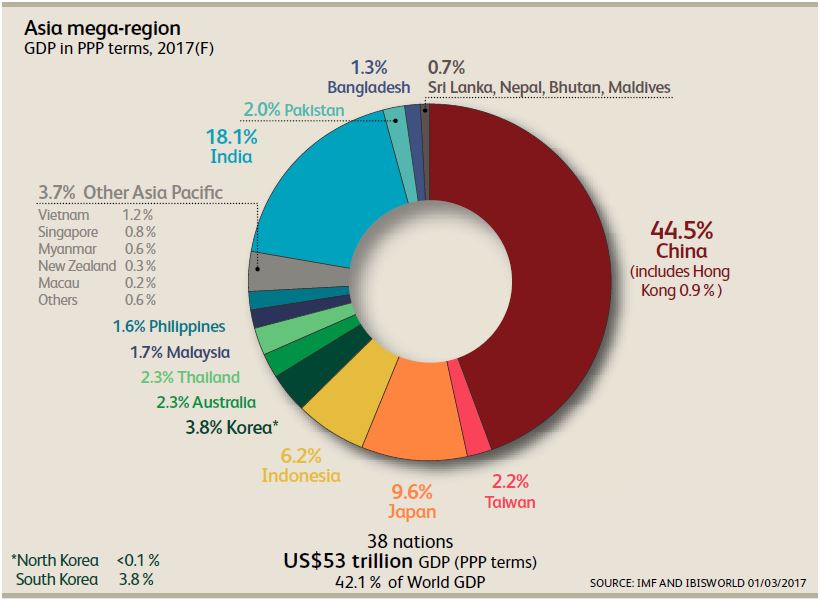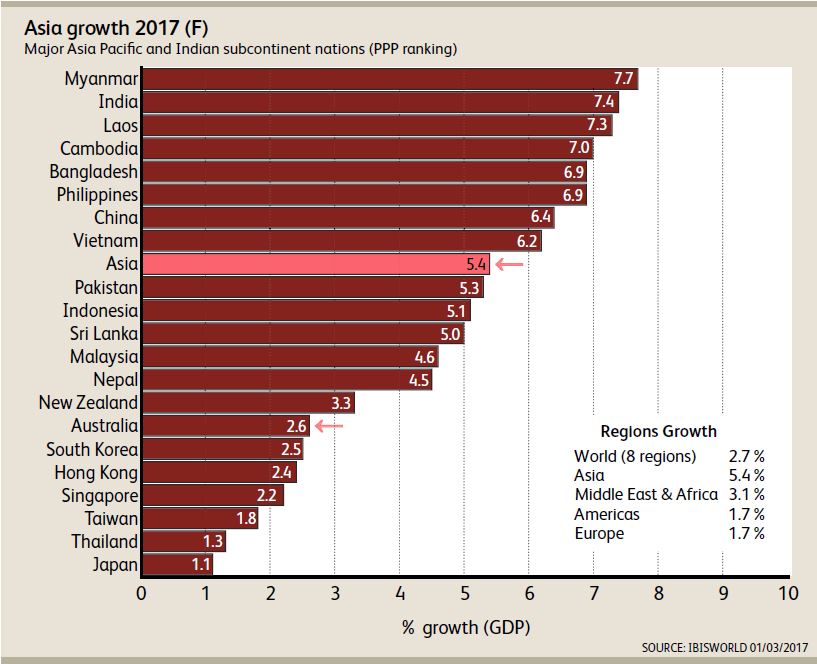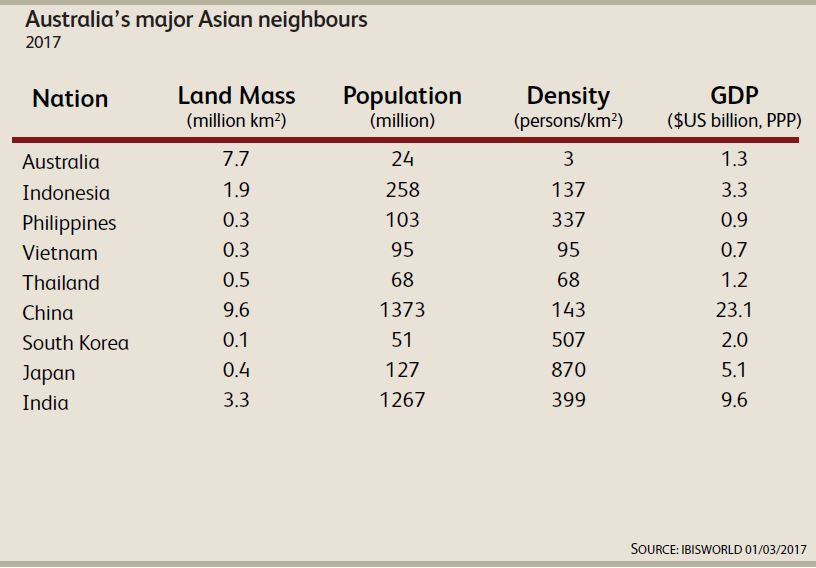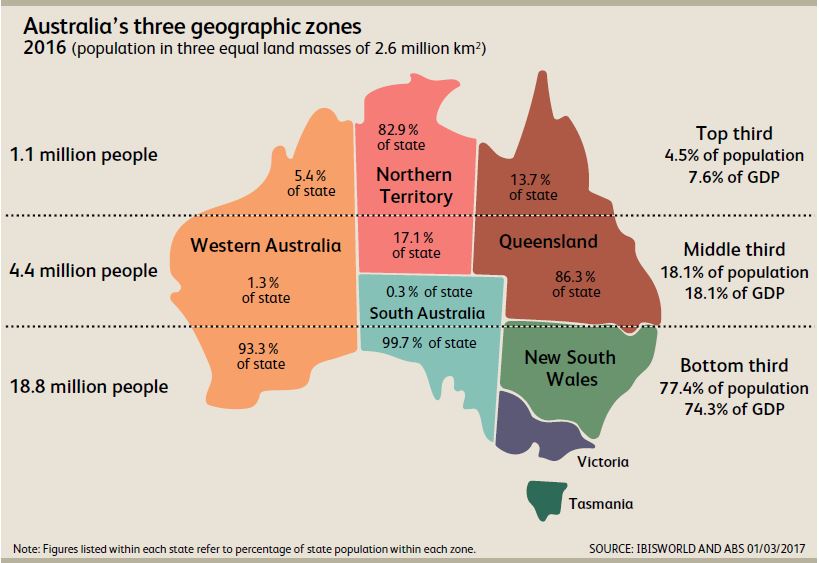The Ascent of Asia - Why your attendance at the 2017 Regional Conference in Singapore is compulsory
IBISWorld Founder and Author has written about the “Ascent of Asia” in his March 2017 Newsletter. Phil has given his permission for us to reprint the newsletter. It provides a fascinating snapshot on Australia’s place in Asia and Asia’s place in the world. APIC17 will give greater insight to these issues.
CLICK HERE to visit the 2017 APIC Conference website.
The Ascent of Asia (IBISWorld Newsletter, March 2017)
Phil Ruthven AM, Founder IBISWorld
The September 2015 newsletter set out to create perspective for Australia’s place in the Asia Pacific region for the 21st century. In this newsletter, we revisit this issue and broaden our scope to Greater Asia (including the Indian subcontinent). The proposed departure (Brexit) of the UK from the EU and the latter ’s potential for other difficulties and defections, coupled with a more insular US under the Trump presidency, points to an even greater need for Australia to consolidate its future in its own region of the Asia Pacific – and, indeed, in the wider arena of Asia.
In 2017, the shares of world GDP are forecast to be: Asia Pacific (33%); the Indian subcontinent (9%); North America (19%); Central and South America (6%); Western and Central Europe, mainly the EU (17%); Eastern Europe (4%); the Middle East (7%); and Africa (5%). These are higher shares than thought for the two Asian regions just 18 months ago. 2016 was a landmark year in that it was the first time the East passed the GDP of the West – at least in purchasing power parity (PPP) terms, which is the most important measure of economic size. This year, Asia will top 42% of the world’s GDP, passing Europe and North America combined. Asia’s economic composition in 2017 and its growth prospects are shown in the two following charts; the giants being China and India.


Australia is tiny, at 2.3% of the region’s GDP; yet that still places us as the 19th largest economy in the world of 230 nations and protectorates, with 1% of world GDP (PPP terms).
Tinier still is our population of 24.5 million, which makes up just 0.3% of the world population of 7.4 billion.
The next table further reminds us of our smallness among Asia’s economic and populated giants in everything except land mass.

And the next exhibit shows the degree of our scarcity of population. Our top third, with a land mass of 2.6 million square kilometres, has a population of just over a million people. Our nearest neighbour, Indonesia, with less than three-quarters of that land mass, has a population nearly 250 times greater!

In case we think of the top third of our continent as dry and largely uninhabitable, that part of our land mass holds 60% of our annual water supply. There are now seven Asian cities that are of a similar or greater population size than our entire nation, with its extraordinary land mass. They include: Tokyo (38 million); Shanghai (34 million); Chongqing (less than 32 million); Jakarta (31 million); Karachi (25 million); Delhi (25 million); and Beijing (25 million). More will follow.
None of these facts should ever lead to xenophobia of the sort Australians have exhibited at various times in our history. We are already on our way to a Eurasian society by the end of this century, having been European in the 20th century and British in the 18th century; and we will be on our way to an Asian society in the 22nd century, albeit a rich and westernised Asian society.
Although we are expected to have a population of 70 million by 2100, there will be some Asian cities with a greater population at that time. So, re-eva luating our place in Asia and an appropriate population – given our land mass and resources – there will be an ongoing neighbourly and moral responsibility for many generations to co me. To effectively contribute to such a big and powerful part of the world economy and societ y, we will need to broaden our thinking to consider how we can better utilise – and share – the resources we have available in Australia.

